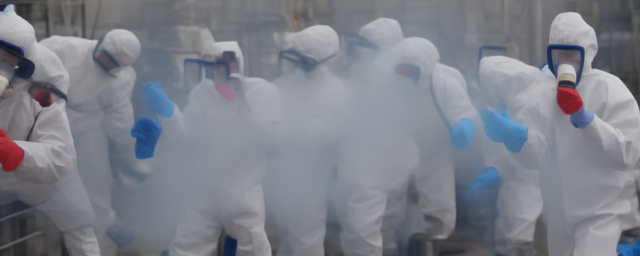
环氧乙烷对人体的危害
原|2024-04-25 13:00:58|浏览:77
Ethylene oxide, also known as epoxyethane, is a highly toxic and hazardous chemical that poses serious health risks to humans. Exposure to ethylene oxide can occur through inhalation, ingestion, or skin contact. Here are some of the potential health hazards associated with ethylene oxide exposure:
1. Carcinogenicity: Ethylene oxide is classified as a known human carcinogen by the International Agency for Research on Cancer (IARC). Long-term exposure to ethylene oxide has been linked to an increased risk of developing various types of cancer, including leukemia, lymphoma, and breast cancer.
2. Respiratory effects: Inhalation of ethylene oxide can cause irritation of the respiratory tract, leading to symptoms such as coughing, shortness of breath, and chest tightness. Prolonged exposure may result in more severe respiratory issues, such as asthma and bronchitis.
3. Reproductive toxicity: Ethylene oxide is known to have adverse effects on reproductive health. Exposure to ethylene oxide has been associated with infertility, miscarriages, and birth defects in pregnant women. It can also affect male fertility by damaging sperm cells.
4. Neurological effects: Ethylene oxide exposure can impact the central nervous system, leading to symptoms such as headaches, dizziness, confusion, and memory loss. Chronic exposure may result in more serious neurological disorders, including nerve damage and cognitive impairment.
5. Skin and eye irritation: Contact with ethylene oxide can cause skin irritation, redness, itching, and chemical burns. Eye exposure to ethylene oxide may result in irritation, tearing, and blurred vision. Prolonged or repeated contact can lead to dermatitis and corneal damage.
6. Acute toxicity: Inhaling high concentrations of ethylene oxide in a short period can cause acute poisoning, leading to symptoms such as nausea, vomiting, dizziness, and difficulty breathing. Severe exposure can result in loss of consciousness, seizures, and even death.
In conclusion, ethylene oxide is a highly hazardous chemical that poses significant risks to human health. It is essential to take appropriate safety measures, such as using personal protective equipment, ensuring proper ventilation, and following strict handling procedures, to minimize the risk of exposure to ethylene oxide and protect human health.
猜你喜欢
- 茶的分类及代表品种
- 六大茶类的代表名茶分别有
- 茶的类型和代表
- 六大茶叶的分类及产地
- 庙的分类及代表
- 藻的分类及其代表
- 茶的分类及代表茶品特点
- 茶的分类及代表茶
- 简述茶类的分类及其代表性名茶
- 六大茶类的分类及代表茶
- 动物分类及代表
- 糖的分类及代表
- 茶的分类及代表茶叶
- 茶的分类及代表图
- 茶的分类及代表作
- 茶器按质地的分类及代表茶器
- 茶的分类及代表名茶教学设计
- 简述茶的分类及代表性名茶
- 请写出乌龙茶的分类及代表茶
- 法国雅文邑白兰地系列
- 雅文邑白兰地介绍
- 1952年法国雅文邑白兰地
- 法国雅玛邑白兰地
- 纽波利顿獒
- 法国犬品种
- 南非獒犬的优缺点
- 波尔多獒犬寿命
- 波兰狩猎犬
- 波尔多犬和罗威纳犬对比
- 波尔多犬和杜高对比
- 世界十大凶犬
- 护卫犬排行榜前十名
- 大红袍怎么泡效果好
- 大红袍怎么泡不开
- 大红袍怎么泡茶
- 大红袍怎么泡出来没颜色
- 大红袍怎么泡不苦
- 大红袍怎么泡多久
- 大红袍怎么泡才正确的特点
- 大红袍怎么泡没有柴味儿
- 大红袍怎么泡放多少合适
- 花香大红袍怎么泡
- 大红袍怎么泡茶好
- 大红袍是怎么泡的
- 大红袍怎么泡水好喝
- 大红袍用玻璃杯怎么泡
- 大红袍怎么泡味道浓一些
- 十大排名果花茶
- 十大花茶组合排名
- 十大花茶品种大全
- 十大花茶功效
- 十大花茶销量排行榜
- 十大花茶有哪些
- 十大花茶品种
- 十大花茶推荐
- 十大花卉排行榜
- 十大花卉
- 十大花茶调理内分泌
- 九五至尊秦昊明月关山
- 红茶冲泡工艺
为你推荐






































































